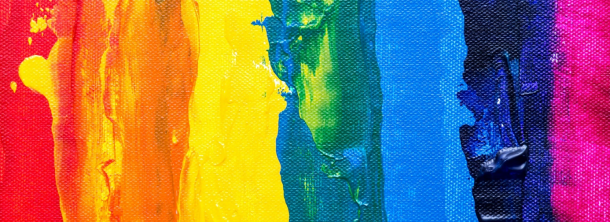Welcome to Iris Biotech
For better service please confirm your country and language we detected.
confirm selection

For better service please confirm your country and language we detected.

Thank you very much for your interest in our products. All prices listed on our website are ex-works, Germany, and may attract customs duties when imported.
You may/will be contacted by the shipping company for additional documentation that may be required by the US Customs for clearance.
We offer you the convenience of buying through a local partner, Peptide Solutions LLC who can import the shipment as well as prepay the customs duties and brokerage on your behalf and provide the convenience of a domestic sale.
Continue to Iris Biotech GmbHSend request to US distributorPublished on 17.09.2024

TentaGel® resins are made of low cross-linked polystyrene on which poly(ethylene glycol) (PEG) is grafted. This PEG acts as hydrophilic spacer and is attached to the polymer matrix by an ether bond, which is very stable towards acids like TFA, and excels by minimized PEG leaching. TentaGel® resins have high diffusion rates and excellent swelling properties in a wide range of hydrophobic and hydrophilic solvents, like, e.g., toluene and water. They are pressure stable and can be used in batch processes as well as under continuous flow conditions. These properties make TentaGel® resins superior over pure polystyrene (PS) supports for solid phase syntheses, especially when difficult sequences need to be synthesized.
Herein, we present our latest TentaGel® product additions and related applications.
For the cost-efficient heavy atom labelling of peptides with non-radioactive isotopes (13C and 15N), we recommend our preloaded resins RAI1202 and RAI1217, carrying labeled L-Lysine and L-arginine, respectively, allowing the clear detection of labeled peptides by mass spectrometry or NMR.

The resins RAI1202 and RAI1217 are preloaded with 13C- and 15N-labeled L-lysine and L-arginine, respectively.
For DNA synthesis, we are offering TentaGel® resins which are preloaded with dimethoxytrityl-protected deoxynucleosides (N300021, N300022, N300023, N300024). Their average bead size is 90 µm (170 mesh) with a capacity of 150 - 220 µmol/g. The PEG spacer has a molecular weight of around 3000 Da. Tentagel® N resins may be used directly as solid support together with standard protocols and may be heated with microwaves.

Structural representation of the TentaGel® resins, preloaded with the four different DMT-protected deoxynucleosides.
To create PEGylated molecules (e.g., N-terminally PEGylated peptides) via solid phase synthesis, we offer the resin TGI1002. It carries a cleavable 3 kDa PEG spacer (this equals to about 68 ethylene glycol units), which is terminated with an aliphatic amino group. The PEGylated compound can easily be cleaved from the polystyrene support with mixtures of either a) TFA/thioanisole (95:5) (10 ml per gram resin, 12 hours at room temperature), or b) TFA/trimethylsilyl bromide/thioanisole (94:1:5) (1 hour at room temperature) and will yield a PEG alcohol.

With the polystyrene (PS) based PEG-Amine resin TGJ1002 you may create N-terminally PEGylated polypeptides.
In terms of Native Chemical Ligation (NCL), we provide – amongst other products – resins decorated with the Dawson MeDbz Rink-Amide linker (MeDbz = methylaminobenzyl). This support facilitates the synthesis of C-terminal peptide aryl thioesters by Fmoc SPPS. After the peptide assembly on the resin, in a follow-up reaction, a cyclic N-acylurea may be formed from the Dawson linker using p-nitrophenyl chloroformate, which then may be converted into the desired aryl thioester by reacting it with an aryl thiol, or directly be used for NCL as activated amide. The linker is available in combination with polystyrene (H-10091) or TentaGel® (S-30091) as solid support.

Facilitated-assembly of a peptide from fragments by native chemical ligation (NCL), assisted by the Dawson MeDbz Rink Amide Resin: When peptide 1 is cleaved from the resin, the Dawson linker stays connected to it. This peptide may be derivatized with p-nitrophenylchloroformate to an N-acylurea, which may be used directly for NCL with peptide 2 (dotted line). Alternatively, the N-acylurea first may be converted into a peptide thioester.
In terms of linkers, we are also offering TentaGel® Trityl Rink amide resin (S309020). Treatment of this material with diluted acetic acid (AcOH), trifluoroethanol (TFE) or mixtures of both in dichloromethane (DCM) cleaves the trityl ester bond and releases the fully protected peptide amide where the C-terminus of the protected peptide amide is still masked by the Rink handle, which later may be removed with TFA. In this way, derivatization of Glu or Asp within the peptide chain is possible, e.g., to generate cyclic peptides by coupling with the side chain amino group of Lys.

The Fmoc-Rink-amide-trityl TentaGel® resin (S309020) can be used to synthesize Rink-amide protected peptides.
→ Download our brochure and discover our (TentaGel®) Resin portfolio, applications, and protocols!
→ You are looking for the right resin for your application? Get in contact!
References:
A Reversible Protection Strategy To Improve Fmoc-SPPS of Peptide Thioesters by the N-Acylurea Approach; S. K. Mahto, C. J. Howard, J. C. Shimko, J. J. Ottesen; Chem. Bio. Chem. 2011; 12(16): 2488-2494. https://doi.org/10.1002/cbic.201100472
An efficient Fmoc-SPPS approach for the generation of thioester peptide precursors for use in native chemical ligation; J. B. Blanco-Canosa, P. E. Dawson; Angew. Chem. Int. Ed. 2008; 47(36): 6851-6855. https://doi.org/10.1002/anie.200705471
Development of a multiplex mass spectrometry method for simultaneous quantification of urinary proteins related to respiratory health; S. J. D. Nauwelaerts, N. H. C. Roosens, A. Bernard, S. C. J. De Keersmaecker, K. De Cremer; Sci. Rep. 2021; 11: 10107. https://doi.org/10.1038/s41598-021-89068-9
Multiple-Enzyme-Digestion Strategy Improves Accuracy and Sensitivity of Label- and Standard-Free Absolute Quantification to a Level That Is Achievable by Analysis with Stable Isotope-Labeled Standard Spiking; J. R. Wiśniewski, C. Wegler, P. Artursson; J. Proteome Res. 2019; 18(1): 217-224. https://doi.org/10.1021/acs.jproteome.8b00549